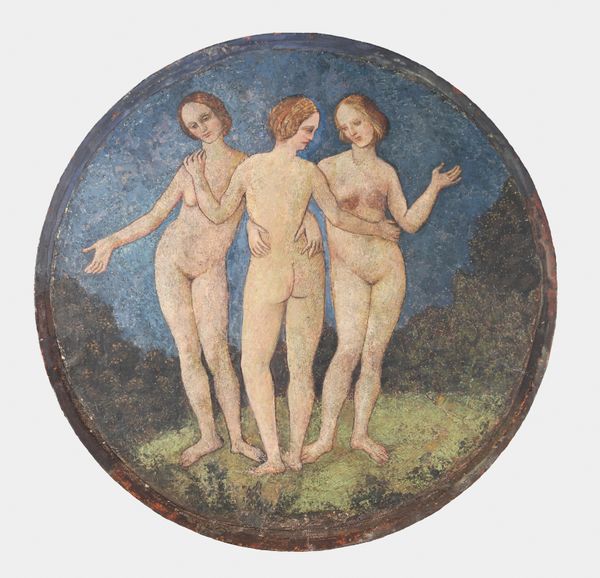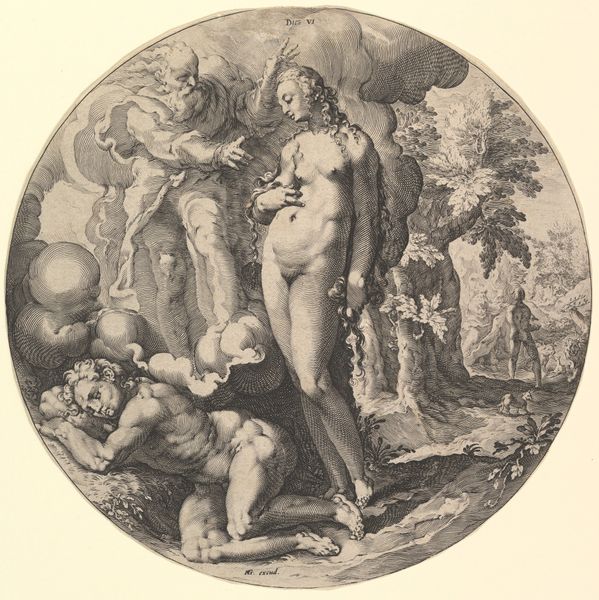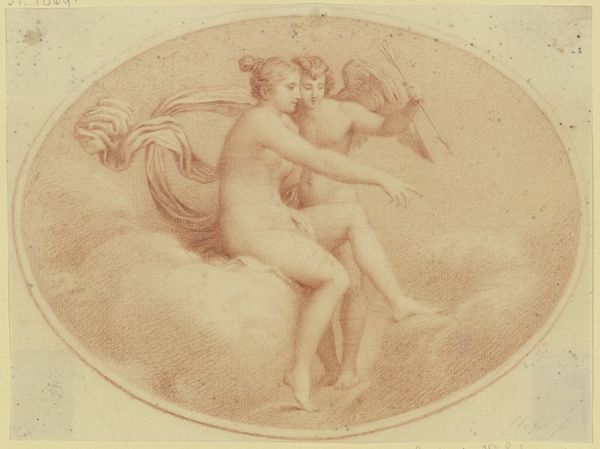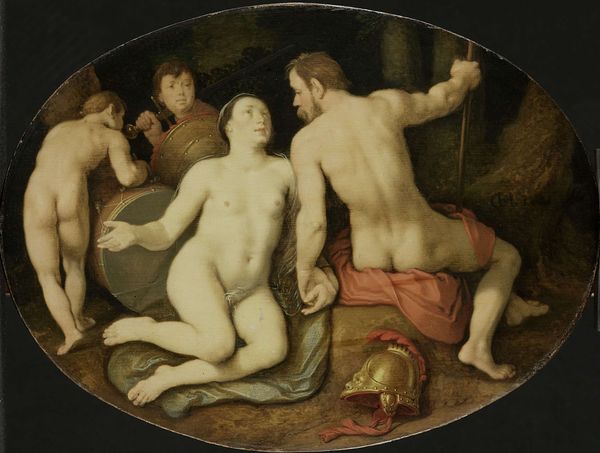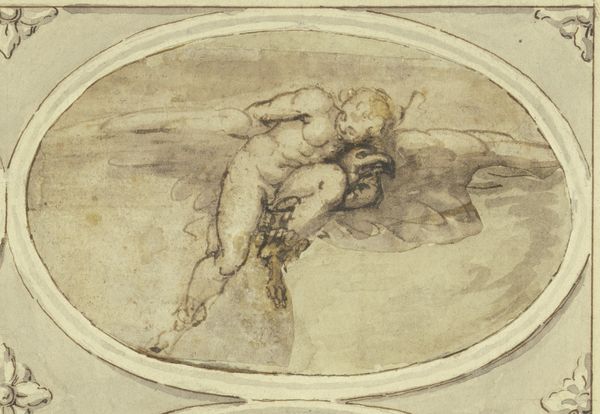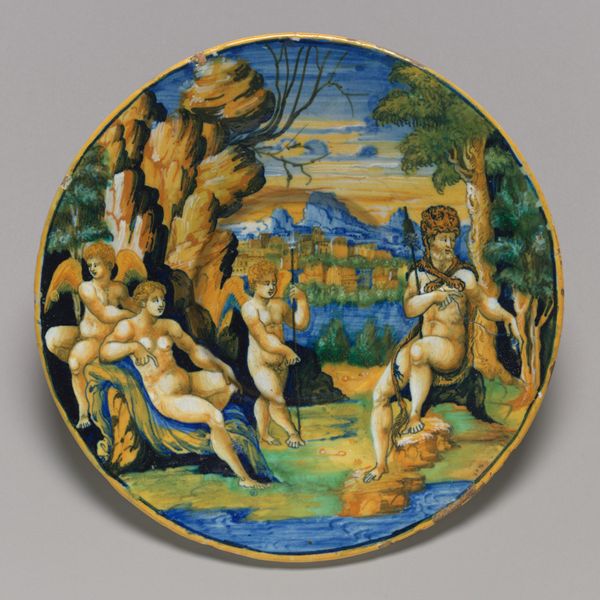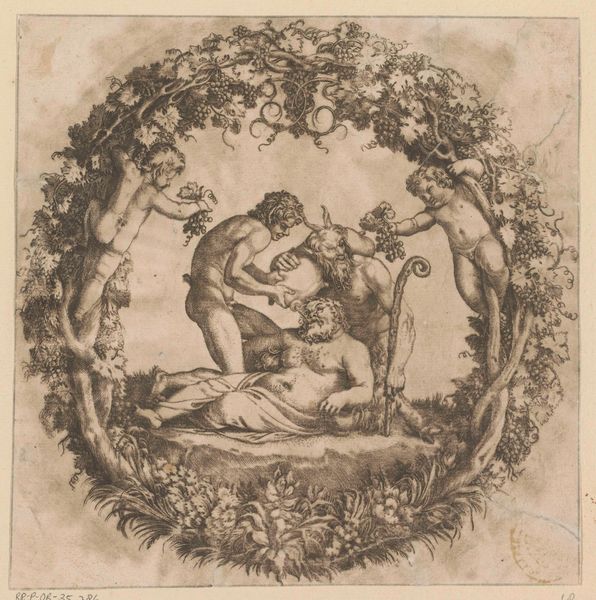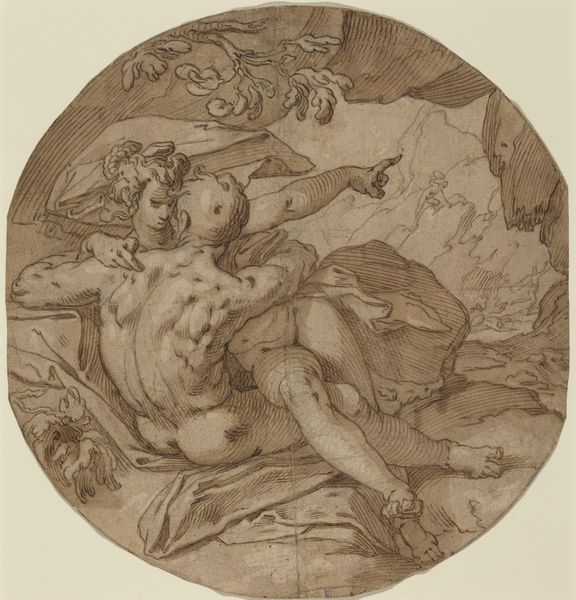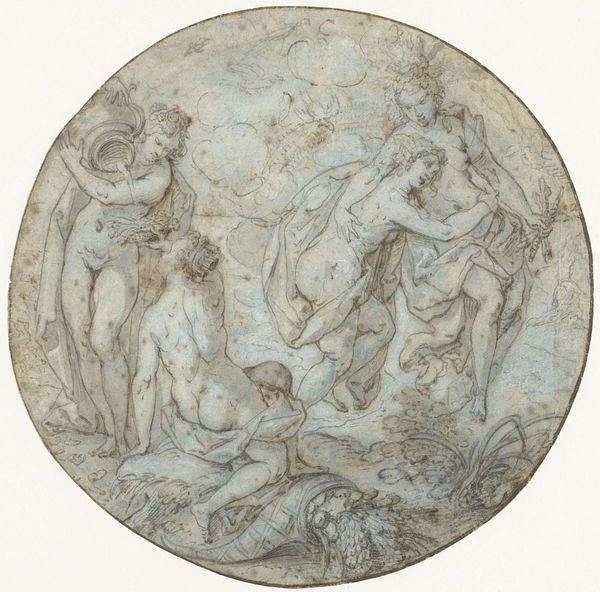
painting, oil-paint
#
allegory
#
painting
#
oil-paint
#
oil painting
#
female-nude
#
italian-renaissance
#
nude
#
male-nude
Dimensions: Diameter: 19 3/8 in. (49.2 cm)
Copyright: Public Domain
Curator: This intriguing panel painting, thought to have been crafted between 1504 and 1514, is titled *Jupiter and Antiope* and is attributed to Pinturicchio. Currently, it graces the walls of the Metropolitan Museum of Art. Editor: The dreamy circular composition certainly draws you in. It feels like a vignette plucked from a larger tapestry. I notice the artist paid such careful attention to the bodies. Curator: Pinturicchio employed oil paint, a relatively recent medium at the time, and notice the careful layering? It invites us to ponder the production processes, specifically where those pigments came from and the artist’s mastery in manipulating the material to achieve these striking figures. We have the nymph Antiope reclining under the gentle touch of Jupiter, here disguised as a satyr. What do you see in the symbolism? Editor: Disguise, certainly! The satyr, a symbol of unrestrained earthly desire, massaging the sleeping nymph— it immediately recalls the tradition of the ‘sleeping Venus’ motif. Yet the classical bust adds another layer. There's a real sense of the past informing the present, as well as the painting being ripe with the implications of desire and deception. I wonder, who does that bust represent? Perhaps Jupiter again? Curator: That detail intrigues me from a production perspective, as well. Was it cast? How does its inclusion comment on the material and sculptural processes compared to painting practices? Editor: In terms of artifice, certainly that plays out, and is that a comment on morality, perhaps? Is Pinturicchio reminding us that outward appearances often conceal inner drives? Curator: Considering the work in relation to social dynamics – think of it: this was probably commissioned. I am also interested in the domestic role the painting might have played in the space for which it was originally created, and the cultural consumption by wealthy Italian Renaissance patrons. Editor: Fascinating point. Reflecting upon the visual cues and symbolic load embedded in this artwork opens our eyes to layers of complex interactions of past mythologies, present-day social conditions and a continuing chain of visual memory. Curator: By examining this piece with focus on its making and material construction, we also uncover compelling clues concerning how creative endeavors reflect socioeconomic infrastructures of labor, materiality, and value.
Comments
No comments
Be the first to comment and join the conversation on the ultimate creative platform.

